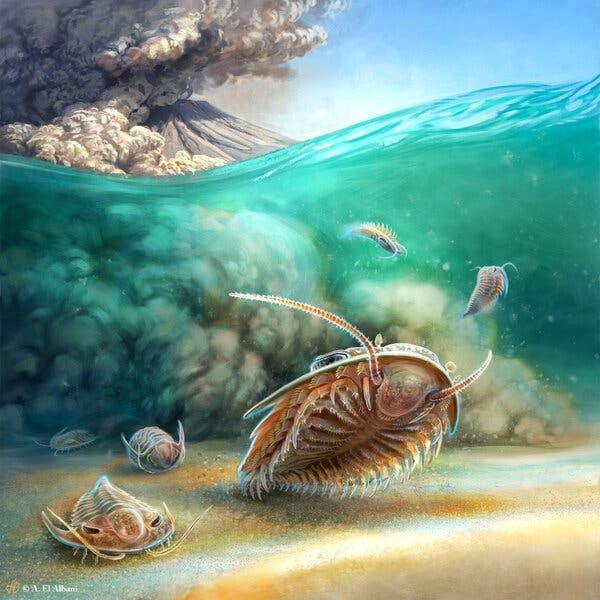A fossil bed in the High Atlas Mountains of Morocco is allowing new insights into the anatomies of arthropods that lived a half-billion years ago.
Hundreds of millions of years ago, trilobites could be found all over the Earth. Cloaked in tough exoskeletons, the animals left behind countless fossils to be studied by paleontologists today. Despite all those preserved shells, scientists have been unable to understand certain aspects of trilobite anatomy after centuries of study, especially the soft internal structures of the ancient arthropods.
But a group of trilobite fossils entombed in volcanic ash in Morocco may provide the best glimpse yet of the segmented seafarers. In a paper published Thursday in the journal Science, researchers describe a batch of trilobites that were petrified in a manner similar to the Romans of Pompeii who were frozen in death by the eruption of Mount Vesuvius.
Abderrazak El Albani, a geologist at the University of Poitiers in France, led the dig that resulted in the discovery of the new fossils in the High Atlas Mountains in 2015. During the Cambrian period 510 million years ago, the area was a shallow marine environment surrounded by spewing volcanoes. One of those eruptions left a cream-colored layer of fine-grained volcanic ash in which the trilobites were fossilized.
When the researchers cracked open the volcanic rock, they found incredibly detailed impressions of the trilobites etched into the stone. “Volcanic ash is so fine grained, like talcum powder, that it can mold the tiniest anatomical features on the surface of these animals,” said John Paterson, a paleontologist at the University of New England in Australia and one of the coauthors of the new study.
Dr. El Albani and his team posit that a short and sudden burst of volcanic activity buried the trilobites when ashy debris flooded the marine environment. One smothered trilobite’s digestive tract is even packed with sediment that it may have ingested before death. As the ash turned to stone, it created three-dimensional molds of the entombed trilobites.
